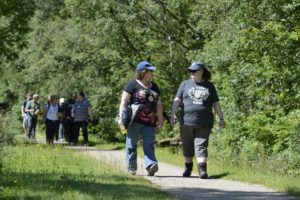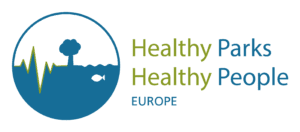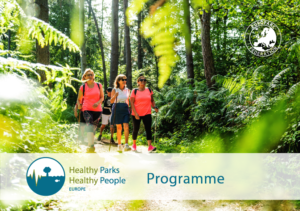A new EU Strategy on Climate Change Adaptation
Rampion Offshore Wind Farm, United Kingdom. Photo by Nicholas Doherty/Unsplash.
On 24 February, the European Commission adopted a new EU Strategy on Adaptation to Climate Change, setting out how the EU can adapt to the unavoidable impacts of climate change and become climate resilient by 2050.
Building a climate-resilient future
As part of the EU Green Deal, the European Commission unveiled on Tuesday a new, more ambitious EU Strategy on Adaptation to Climate Change.
The COVID-19 pandemic reminded us of our unpreparedness to face global crises. Executive Vice-President for the European Green Deal, Frans Timmermans commented:
There is no vaccine against the climate crisis, but we can still fight it and prepare for its unavoidable effects. (…) If we get ready today, we can still build a climate-resilient tomorrow.
Building on the 2013 Climate Change Adaptation Strategy, and following an open public consultation from last year, the new proposal aims to shift focus from understanding the problem and planning, more towards finding and implementing concrete solutions.

Fridays for future – global climate strike on the European elections in May 2019. By Markus Spiske.
Read more about the EU Climate change policy here.
Why a new Strategy?
The impacts of climate change, such as extreme weather including heat waves and droughts, are increasingly frequent in Europe and globally. These result in economic losses, environmental degradation and also affect health and well-being of people all around the world. According to the Centre for Research on the Epidemiology of Disasters (CRED), the most lethal natural disaster of 2019 was the European heat wave, hitting specifically France, Belgium and the Netherlands.
The European Climate adaptation strategy aims to:
- improve knowledge of climate impacts and solutions: concretely through enhancing and expanding Climate-ADAPT, the European platform for adaptation knowledge;
- step up systemic adaptation planning and climate risk assessments;
- accelerate adaptation action;
- and help to strengthen climate resilience globally through scaling up international finance, stronger global engagement and exchanges on adaptation.
The principal objectives are to make adaptation smarter, swifter and more systemic, and to step up international cooperation on adaptation to climate change.
What is next?
The four goals are underpinned in 14 actions, which should be taken to deliver the principal objectives. In the next step, the Commission will discuss the Strategy with the Member States in the Environmental Council. The Council is then expected to agree to conclusions on the new strategy in its next meeting in June 2021.
Climate Change Adaptation & Protected Areas
While nature suffers from climate change effects and needs our protection, Protected Areas can at the same time help us tackle the problem.
EUROPARC welcomes the new strategy, as it acknowledges the urgency of the climate crisis, calls for more international cooperation and highlights the importance of systemic solutions – including the high priority of preserving healthy ecosystems to create efficient nature-based solutions.
Explore how EUROPARC helps Protected Areas managers adapt to climate change within the LIFE project Natur’Adapt and learn more in our section on Climate Change Adaptation & Protected Areas.
Hear from Jorge Bonache: Participant in LIFE e-Natura2000.edu
In March 2020 the second course of the LIFE e-Natura 2000.edu project started: “Building alliances for Natura 2000 Management”, which was led by Fungobe and EUROPARC Spain. Here you can read the experience of participant Jorge Bonache from the Spanish National Park Agency.
The course
LIFE e-Natura 2000.edu set out to build capacity through innovative learning tools. This innovative three-year project explores the potential of building new approaches and learning methods to improve knowledge and capacity amongst Natura 2000 Managers in both public and private land, across the EU. Taking a competence-based approach, it wants to enable peers to connect and learn about what managers need to know and be able to do. The project is led by EUROPARC, with the support of six partners.
- ProPark,
- FUNGOBE / EUROPARC Spain,
- TESAF Department of the University of Padova,
- European Landowners Organisation,
- Kullaberg Nature Reserve.
As we are slowly reaching the end of the project, we want to highlight some of the experiences the participants have made. We already published a small recap written by project leader Neil McIntosh, who took us through the strange year of 2020 and how the EUROPARC led course “Competent Inclusive Communication” fared. We also already heard from biologist Irene Estévez who followed the Fungobe and EUROPARC Spain led Course II “Building alliances for Natura 2000 Management”. Jorge Bonache participated in the same course and has taken the time to tell us about his experience. You can read it here:
A National Parks perspective
“My name is Jorge Bonache, I have a degree in Environmental Sciences and I have been working for the Spanish National Parks Agency (Ministry for the Ecological Transition and the Demographic Challenge) since 2003, first as a manager in Atlantic Islands of Galicia National Park and then in Cabañeros National Park. Since 2012 I work in the central services of the agency in Madrid. All Spanish national parks are included in Natura 2000.
In all these years I have played different roles related to the management of protected areas: conservation, monitoring, GIS, remote sensing, public use management, coordination of work groups, participation and environmental education, planning… Within the course on “Alliances for Natura 2000” I had the opportunity to present an initiative in which I participated when I was working in the Atlantic Islands National Park — the project called “Islands without rubbish bins“. It was developed by the national park in close coordination with multiple entities with the objective of removing the enormous number of rubbish containers in the National Park, so that visitors were responsible for the waste they generated, with the benefits that this entailed for conservation and environmental awareness.
One of my professional challenges is to get involved in more projects related to participation and governance. I believe that both participation and governance, and communication as well, play a key role for the management of protected areas. And I am aware that I have still a lot to learn about these matters, which was one of the main reasons why I decided to participate in the course.
All in all, I can say that the course has been truly useful and motivating for me.
All the key aspects have been dealt with in a practical and organised way, the reading materials were well chosen, the tutorial videos summarized very well the substantial issues and the discussion forums with the participants, some of them with a lot of experience in the field, were very rewarding. The acquired knowledge will for sure be useful for my professional future. In this way, it is just a pleasure to learn.”
The eNatura2000 app
Within the project an app was developed to help Natura2000 managers and other nature professionals learn, discuss and connect together. The app is available on Google Play and App Store!
With eNatura2000, users will be able to discuss issues and difficulties that arise in the management of Natura 2000 lands, and get inspired by existing best practices and solutions. Developed by EUROPARC with 5 partner organisations from around Europe, this practical tool will make networking across regions, countries, and land types for Natura2000 managers easy and enjoyable.
The digital tool will help Natura 2000 managers identify issues, solve common problems that they face, communicate with each other directly, as well as learn about their professional development needs: for example, the App will act as a portal to a new online Natura 2000 Training Need Assessment (TNA) tool, and provide a variety of other useful resources on the projects webpages. For more information on the app, go here.

Next webinar: ¿Cómo superar barreras y mejorar la cooperación entre áreas protegidas transfronterizas? El Programa de cooperación transfronteriza de EUROPARC
Next EUROPARC Webinar on the 24th of February, 10:30 AM CET: How to overcome borders and improve cooperation between transboundary protected areas? The EUROPARC Transboundary Cooperation Programme. The webinar will be in Spanish. For the programme in English go here.
En el Año Internacional de la Paz y la Confianza, hablaremos del papel de las áreas protegidas en el diálogo internacional y la protección de la naturaleza, y de cómo mejorar la cooperación transfronteriza.
En este webinario organizado por la Federación EUROPARC en colaboración con EUROPARC España, reflexionaremos sobre estas cuestiones a través de la presentación del Programa Transfronterizo de EUROPARC y lo que puede aportar la experiencia y el compromiso de la Red de áreas protegidas transfronterizas (TransParcNet) para impulsar la cooperación entre España, Portugal, Francia y Andorra.
Programa:
El Programa EUROPARC Transboundary Programme “Following Nature’s Design”, Stefania Petrosillo
Europa es un continente complejo con miles de años de interacción humana que ha creado fronteras políticas que se superponen sobre una naturaleza que no sigue estos artefactos de la civilización. Las áreas protegidas constituyen una herencia compartida europea de protección de la naturaleza. El EUROPARC Transboundary Programme y el Certificado “Following Nature’s Design” aporta una metodología y una certificación que apoya a las áreas protegidas transfronterizas a través de un proceso de entendimiento mutuo, cooperación y gestión colaborativa. Actualmente hay 23 áreas protegidas certificadas y 10 áreas transfronterizas que han creado la red TransParcNet (http://www.europarc.org/nature/transboundary-cooperation/)
Caso de estudio 1: La experiencia de la Ecoregión transfronteriza de los alpes Julianos, Tanja Menegalija
La Ecoregión transfronteriza de los alpes Julianos se localiza entre Italia y Eslovenia donde se encuentran el Parque Regional Natural Prealpino juliano en Italia y el Parque Nacional de Triglav en Eslovenia y la Reserva de la Biosfera de los Alpes julianos. La cooperación comenzó a finales de los 90 y ha crecido firmemente a lo largo de los años. La Ecoregión fue reconocida como Parque Transfronterizo en 2009 y está certificada con la Carta Europea de Turismo Sostenible desde 2016.
Caso de estudio 2: Cooperación transfronteriza Gêres-Xurés, España – Portugal, José Antonio Amoeiros y Sonia Almeida
La Reserva de la Biosfera Transfronteriza Gêres-Xurés, España – Portugal fue declarada en 2009. En toda el área pueden encontrarse vestigios megalíticos, celtas, romanos y medievales, que atestiguan un antiguo y organizado uso del territorio. Esta figura supone el reconocimiento de la necesidad de un esfuerzo común y articulado de salvaguarda de los valores de flora, fauna y paisaje, al tiempo que se promueve el desarrollo económico sostenible y se fomenta la participación activa de los actores del territorio.
Los ponentes:
- Stefania Petrosillo es la responsable de las políticas europeas en la oficina de EUROPARC en Bruselas. Coordina el Programa Transfronterizo y la red TransParcNet, a quien representa en el grupo de especialistas en conservación transfronteriza de la Comisión de Áreas Protegidas de UICN.
- Tanja Menegalija trabaja en el Parque Nacional Triglav, Eslovenia, donde desarrolla el proyecto de cooperación “Julius y Nat2care”, el seguimiento de flora y fauna y coordina la nueva película “Naturaleza sin fronteras”.
- José Antonio Amoeiros es biólogo y trabaja en la Xunta de Galicia como técnico del Parque Natural Baixa Limia – Serra do Xurés y gerente de la parte española de la Reserva de la Biosfera Gerês-Xurés.
- Sonia Almeida es la administradora delegada de la Asociación Adere-Peneda Gerês en la parte portuguesa de la Reserva de la Biosfera Gerês-Xurés.
El webinario será moderado por Marta Múgica, Directora de EUROPARC España y miembro del Consejo de la Federación EUROPARC, y por Fernando Pinillos, responsable de comunicación de la Federación EUROPARC.
El webinario tendrá una duración máxima de 2 horas y será presentado en español, con contribuciones en los diferentes idiomas de los participantes.
New EUROPARC Toolkit: Healthy Parks Healthy People Europe
In 2018, EUROPARC launched its one of a kind toolkit “Health and Well-being benefits from Parks and Protected Areas”. Now, after the launch of the Healthy Parks Healthy People Europe (HPHPe) programme in 2020, we are happy to present an updated version of this toolkit, which integrates the HPHPe programme.
Human health and well-being are linked to nature and spending time in nature can provide a range of health benefits.
In recent years, study after study has shown the positive impacts contact with nature has on people’s health and happiness. Yet, at the same time, we are faced with biodiversity loss, due to natural places being replaced by buildings, industry, roads and other infrastructure.
This is why, in June 2020, EUROPARC launched the Healthy Parks Healthy People Europe programme. The programme wants to support Parks and Protected Areas at the national, regional and local level to deliver better outcomes for the health of people and nature.
The toolkit
To give those managing Parks and Protected Areas the tools to do so, EUROPARC now proudly presents an updated version of its toolkit “Health and Well-being Benefits from Parks and Protected Areas” which includes the HPHPe programme. It was launched today during our “Nature is Good Medicine” Webinar. This HPHPe Toolkit gives practical guidance for those managing Parks and Protected Areas on how to set up the programme in their area. The toolkit provides the reader with evidence, guidelines and best practice examples of Parks and Protected Areas throughout Europe.
How can it help you?
The HPHPe Programme is structured under 4 pillars: Making the Case, Building Partnerships, Developing Capacity and Practice, and Connecting People and Nature. The toolkit follows the same design and for each pillar, a range of tips, tools, information and inspiration is provided. The HPHpe check list is a key part of this toolkit. Through the check list, Parks and Protected Areas staff are guided to develop goals and actions across 7 areas of work. The toolkit is designed to encourage you to consider your current practice and help you think about:
- How best to plan, manage and promote your sites to a wider range of people to improve their general health and well-being
- How to link your sites to the health sector
The checklist is available as a special annex, which can be downloaded separately.
You can download the Check list here
How it is organised

Participants on a Branching Out course at Clyde Muirshiel Regional Park, August 2012
©Lorne Gill/SNH
There are 4 “chapters”, corresponding to the 4 pillars of the HPHPe programme. Each chapter first “sets the scene“: here it is explained what is needed for the programme to be a success. Then, “Key Messages” corresponding to the pillar are presented. This is followed by case studies that highlight best practice examples from different countries in Europe. Each chapter then ends with the HPHPe Check list, where it is summarized exactly what needs to be done to reach to goal corresponding to the pillar.
Through evidence based solutions and practical examples, the HPHPe toolkit gives those managing and working in Parks and Protected Areas the tools to turn their Parks into natural health centers.
Nature is good for your health!
The COVID-19 Pandemic has caused a run on natural spaces, turning the spotlight on long-standing challenges for the management of these places resulting from growing visitor numbers, problematic behaviour, and conflicts between different user groups. However, the pandemic has also highlighted how important these places are from a health perspective and that we need to invest in the provision and planning of these places in dealing with the pandemic. Through the adaption of the HPHPe programme and with this toolkit, EUROPARC seeks to ensure that:
- More of Europe’s Parks and Protected Areas providing well managed, accessible facilities and engaging target groups in health- promoting activities.
- More policy, practice and partnership working to maximise the potential of Europe’s Parks and Protected Areas as key assets for improving public health and well-being
and reducing health inequalities. - More people from all backgrounds enjoying the health benefits of connecting with nature and supporting the case for better protection, restoration and further investment in Europe’s Parks and Protected Areas.
Let’s make the most of our natural heritage! Join the programme, implement the toolkit and establish projects tailored to your Park or Protected Area’s needs and circumstances.
 This toolkit was produced by the EUROPARC Federation and the members of the Healthy Parks Healthy People Europe Commission. It was designed by Bárbara Pais.
This toolkit was produced by the EUROPARC Federation and the members of the Healthy Parks Healthy People Europe Commission. It was designed by Bárbara Pais.

